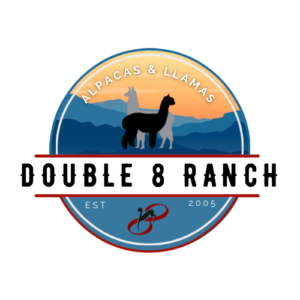Alpacas originated from the Andes of South America and are part of the Camelid family. They are cousin to the llama and are smaller than the llama. Alpacas stand about 36 inches tall at the shoulders and weigh between 150-200 pounds. They are a herd animal, so you should have at least 3. Alpacas have incisors on the bottom of their mouth, molars on top and bottom in the back of their mouth, and a dental pad on the top front. This allows them to gently graze the pasture. Their split foot with two padded toes also makes them easy on pasture. With this said, alpacas are much easier on pasture than horses or cows. Alpacas are ruminants, which means they mostly graze pasture for their nutrition. They are also supplemented with a small amount of grain, free choice minerals, electrolytes (AKA Alpaca Gatorade), and hay. It costs about the same to feed an alpaca per month as it does your pet dog. Because Alpacas are from the Andes of South America, they prefer cooler weather. On a hot summer day, you will likely find the alpacas hanging out by the fans in the barn. The best experience with alpacas is standing in the middle of an alpaca paddock with a running water-hose. The alpacas will run up and soak their bellies, legs and rears, or just drink the water straight from the hose. How refreshing!
Alpacas are bred for their luxurious fleece, which is warmer and lighter than wool, and as soft as cashmere. The alpaca fleece is hypo-allergenic, because it contains no lanolin. Hundreds of years ago domesticated alpacas were known as the “Gold of the Andes, because of their luxurious fleece.” Alpacas come from South America in two varieties, Suri and Huacaya. To compare the fiber produced by each is like comparing apples to oranges. Huacaya fiber has a fluffy, soft, and spongy appearance, much like a teddy bear. The fiber readily accepts dyes due to its scale configuration of crimp along the length of the fibers. Its scale structure also allows it to be efficiently spun into strong yarns. Suri fiber, on the other hand, is very lustrous and slippery, and resembles Angora goat fiber. It is commonly blended with huacaya, sheep’s wool, and other fibers.
